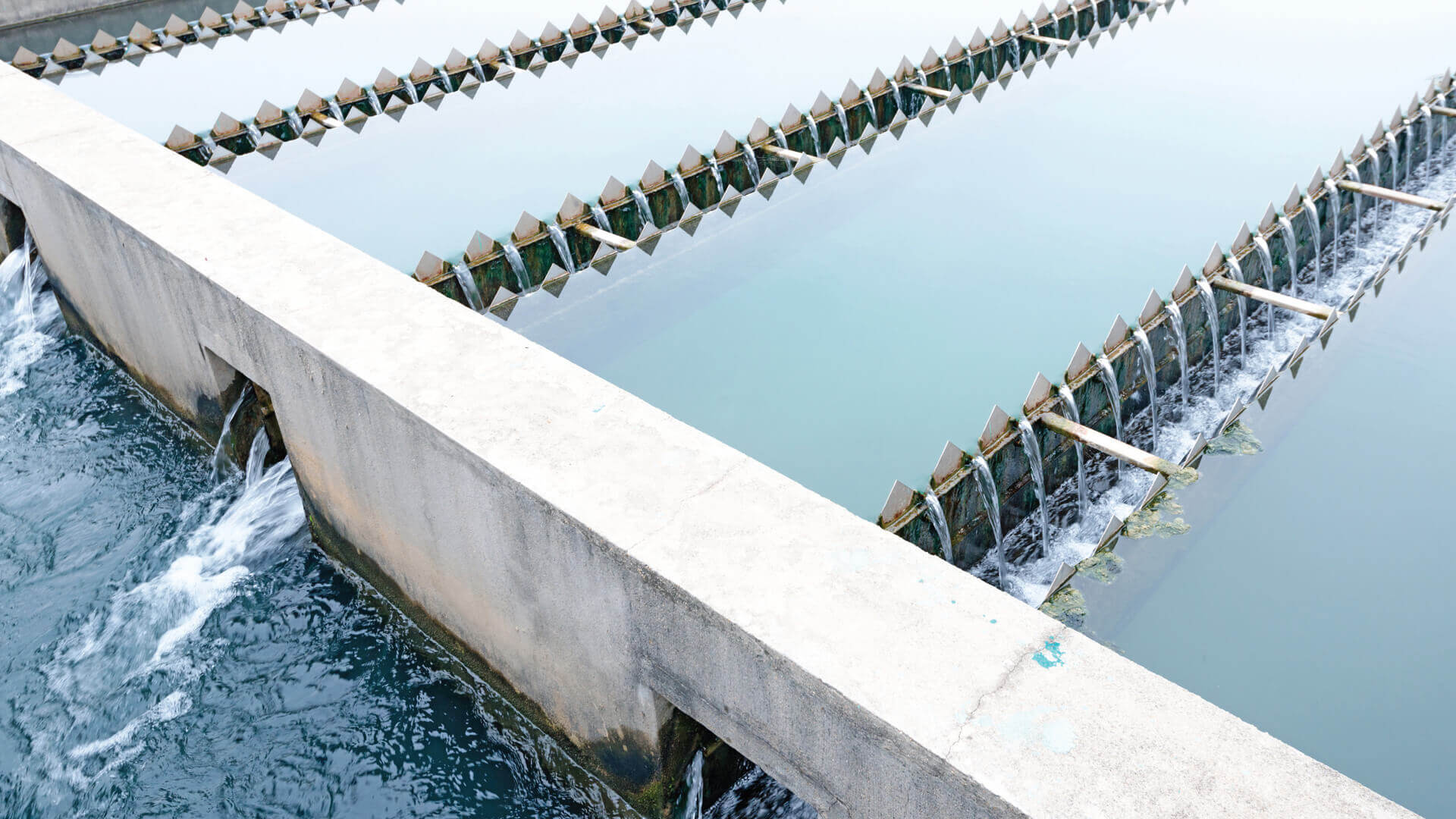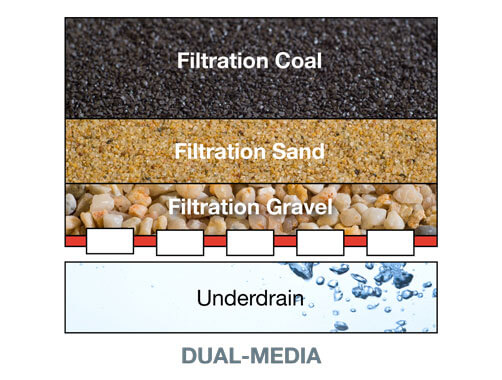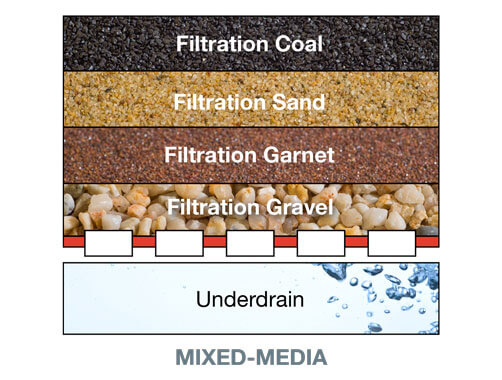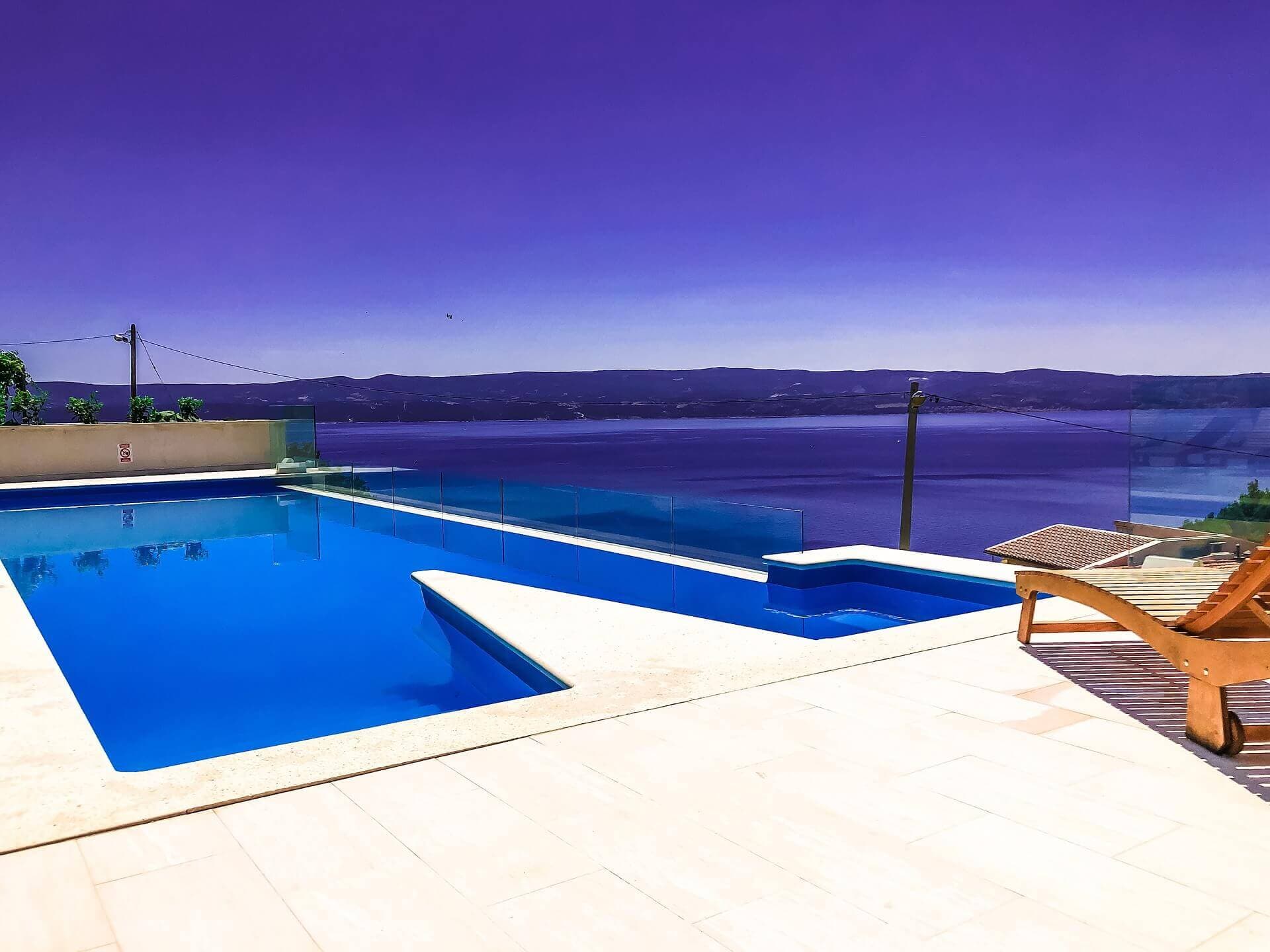Mono, dual and multi-media filter profiles
There are three types of filter profiles that can be used for water filtration: a mono media filter, dual media filter, and a mixed media filter. Each filter profile has a range of benefits that correlate with the setup and media used which can also dictate the best application uses.
River Sands stocks filter media for all 3 types of filters that meet the requirements for the American Water Works Association (AWWA) Standard for Filtering Material. AWWA Standard for Filtering Material is the leading drinking water specification. Browse our filter media products here.
Let’s have a look at the mono media filter profile first.
Mono Media Filter Profiles
A mono media filter is made up entirely of one type of filter media, a highly graded sand that has consistency in shape and size to ensure successful filtration. This type of filter is commonly used in swimming pools for both residential and commercial properties.
As sand is the only medium used, the largest particles within the grade evenly disperse themselves down within the filter, while the smallest remain on top of the media bed. The result of this dispersion rate throughout the bed is very limited use of the media depth. Meaning only a comparatively small part of the bed traps the filterable particles in the smallest voids at the top of the filter bed. Due to this limited use of the whole bed, the filter will run for shorter cycles and will require regular backwashing to avoid anything stopping the flow.
River Sands offers a range of locally sourced river sand to a variety of specific gradings which meet the requirements for AWWA B100-16 and are ideal for mono media filter profiles.
Now that you know what a mono media filter is, let’s have a look at a dual media filter.
Dual Media Filter Profiles
A dual media filter utilises two layers for the filter process which is known as in-depth filtration. This process uses different layers to screen out or remove any impurities before they reach the filter bed. A dual filter system is commonly used in the industrial water treatment industry and requires proper selection of filter media to suit the filter use.
The ideal top layer for a dual media filter is Anthracite, a filter coal, as it has a greater surface area and can hold more dirt and impurities over sand. Anthracite provides in-depth filtration with it’s larger storage capacity and thereby retains efficiency due to the high-carbon nature of the media which makes it durable and can resist erosion. Placing sand as the bottom layer of the filter keeps it relatively unpolluted due to the qualities of the Anthracite and enables more effective filtration. As the sand is naturally unpolluted and relatively clean, this layer isn’t as dependent on backwashing and also reduces the chance of it becoming biologically corrupt.
The main benefits of dual media filtration include:
- Extended filter cycles
- Improved water quality
- Higher retention of solids
- Generally lower pressure losses
River Sands can provide Enduracoal Filter Coal, which is an Anthracite coal that meets the 2016 American Water Works Association Standard for Filtering Material. Additionally, we have a range of graded locally sourced river sands that meet the requirements set out in the AWWA B100-16 and are ideal for use in a dual media filter.
Successful use of the dual media filter profile became the catalyst for the development of the mixed media filter profile.
Mixed Media Filter Profiles
Mixed media filter profiles are also known as multi-media filter profiles and they add another layer to the set-up of a dual filter system. They are considered an enhanced in-depth filtration system due to the inclusion of a garnet layer at the bottom of the filter bed. This type of filter profile is commonly used in water treatment plants. The most ideal media combination is anthracite, sand, and garnet; however, it is possible to replace the garnet with graded gravel. It is also possible in a mixed media profile to incorporate a fourth layer, meaning the filter would be made up of anthracite, sand, garnet, and graded gravel.
The three layers of a mixed media filter profile have different densities, with anthracite being the lightest, followed by sand and then the garnet or gravel. By utilising the different densities of the media, it means that during the backwash cycle the lightest media, anthracite, will settle at the top, the sand as the medium media will remain in the middle and the heaviest media, garnet or gravel, will settle at the bottom. These characteristics help to maintain the structure of the filter profile during the backwash cycle and keep the sand from infiltrating any pipes.
This filter set up also assists in trapping the largest contaminants in the anthracite layer at the top, with the smaller debris being caught in the lower layers. Trapping the contaminants in this manner ensures efficiency and longer run times between backwash cycles.
Benefits:
- Due to their design, they can trap and retain larger amounts of contaminants before requiring backwashing
- Use of the entire bed for filtering out contaminants ensures longer periods of running time
- Produces high quality, filtered water or potable water at faster flow rates
River Sands Enduracoal and filter sands meet the requirements of the AWWA B100-16, both are the ideal choice for any filtration profile. Our filter garnet has a high specific gravity, high hardness, and high density making it extremely effective as the lower layer in a filter profile. River Sands filter gravels are clean, hard, sub-rounded quartz particles that meet the requirements of the AWWA B100-16, supporting the top layers of the filter bed.
No matter the application type, there is a water filtration profile that will suit your needs. Whether it be a mono, dual or multi-media water filter, River Sands can assist with every filter media type involved: graded filter sands, anthracite coal, filter garnet, and graded filter gravels.
Get in touch with us today to find out more about our filter sands for your project.





